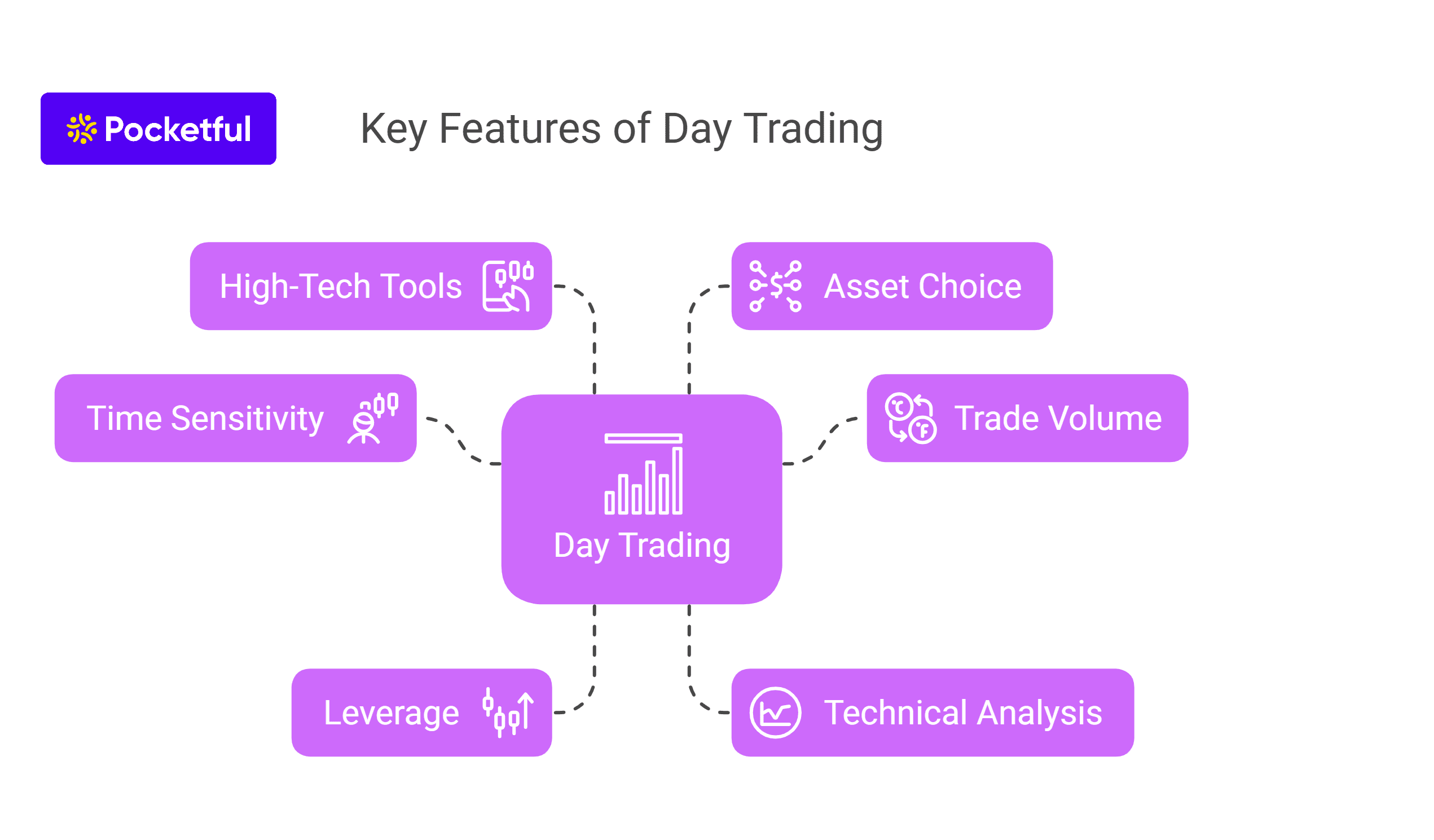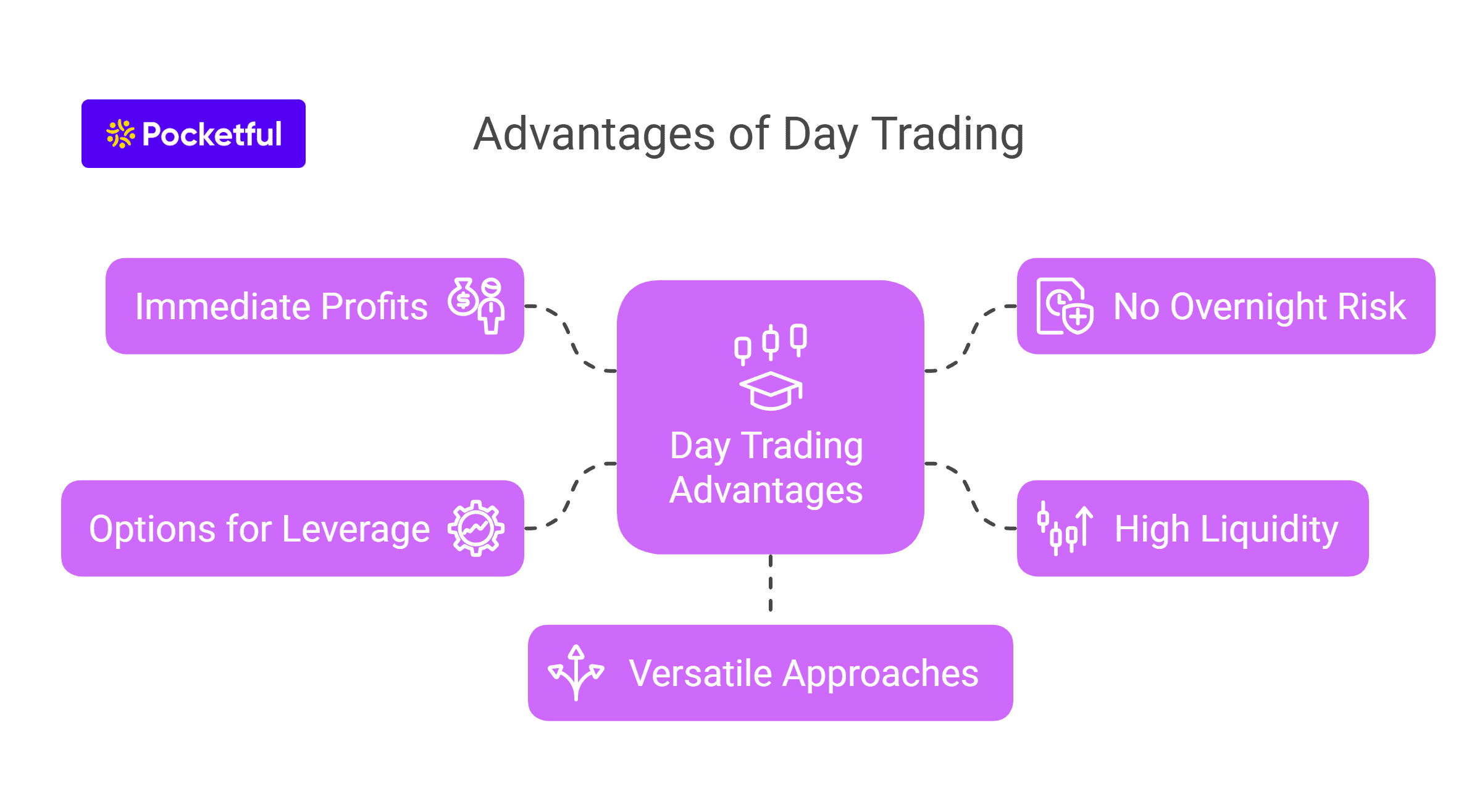| Type | Description | Contributor | Date |
|---|---|---|---|
| Post created | Pocketful Team | May-12-25 | |
| Add new links | Nisha | Sep-08-25 |
Read Next
- 7 Common Mistakes in Commodity Trading New Traders Must Avoid
- Brokerage Charges in India: Explained
- What is a BTST Trade?
- How to Do Algo Trading in India?
- What Is CMP in Stock Market?
- MTF Pledge vs Margin Pledge – Know the Differences
- Physical Settlement in Futures and Options
- List of Best Commodity ETFs in India
- Bullish Options Trading Strategies Explained for Beginners
- Best Brokers Offering Free Trading APIs in India
- Top Discount Brokers in India
- Best Charting Software for Trading in India
- Benefits of Intraday Trading
- What are Exchange Traded Derivatives?
- What is Margin Shortfall?
- What is Central Pivot Range (CPR) In Trading?
- Benefits of Algo Trading in India
- Algo Trading Myths Debunked | Truth About Automated Trading
- How to Start Algorithmic Trading?
- What Is High-Frequency Trading (HFT)?
What Is Day Trading and How to Start With It?

Ever wondered, what is day trading or how to start day trading? As the name goes, day trading refers to buying and selling financial assets, such as shares, commodities, etc., on the same day with the hopes of gaining profit from the trading activities. However, knowing the concepts before trading with real money is important, especially for beginners.
In this blog, we will discuss what day trading is, its key features, and how to get started.
What is Day Trading?
Day trading is a trading approach in which an individual buys and sells financial assets during the same day without holding any trading position overnight. It is known to have high risks because of leverage, but also gives higher returns. The different types of financial assets include stocks, commodities, currencies, and even derivatives. The trades are always executed on the same day, allowing the holder to not only get rid of unwanted overnight risk but also take advantage of immediate trading opportunities as needed. In this, traders close their open positions at the end of a trading day. This helps traders avoid the possibility of being affected by overnight announcements, events, news, etc.
The method is known best for its speed. In the fast-paced global economy that we live in today, every trader invests a considerable amount of time and effort to learn strategies and algorithms designed for evaluating different market conditions. They also require self-control, which enables them to act only after thorough deliberation. Day trading is more time-consuming compared to swing or positional trading, where traders keep their positions open for days, weeks, or months.
Important Features of Day Trading

Some of the important features of day trading are:
- Highly Time Sensitive: Trades can last anywhere between just a few seconds to a couple of hours but never overnight. It is intended to take advantage of small price fluctuations within the market that occur throughout the day.
- High Volume of Trades: A day trader can have many open trades on a single financial asset throughout the day, depending on how the prices fluctuate. This means that they can trade the same security along with its associated derivatives multiple times in a single day.
- Use of Leverage: Margin accounts and leverage provided by brokers are often used by day traders. Leverage enables a day trader to trade with higher capital than the actual capital, which significantly increases the size of the positions taken and can magnify profits. However, it also increases your potential losses.
- Technical Analysis Only: Chart patterns and price data along with technical indicators such as moving averages, RSI, MACD, Bollinger Bands, and many others indicators helps traders make decisions for day trading. Unlike long-term investors, day traders focus on technical analysis rather than analyzing a company’s financials or earnings reports.
- Use of High Tech Tools: Day trading requires advanced technological tools such as new age trading platforms with real-time data feeds and updates, automated trading via APIs, advanced charting, etc., making it easier for traders to identify their entry and exits and act on trades swiftly.
- Optimal Asset Choice: In day trading, most of the traders generally pick securities with high liquidity. In the case of Nifty 50 stocks or even the most traded currency pairs, large volumes are easily available which allows seamless trading.
Read Also: Lowest MTF Interest Rate Brokers in India | Top 10 MTF Trading Apps
Steps to Start Day Trading
If you are planning to do trading for the long-term, then a basic knowledge of key trading concepts is essential. An outline with all the details is given below :
1. Getting Started
- Workshops and Webinars: Attend trading workshops and webinars to learn about practical trading concepts. Learning in a community also encourages the sharing of ideas and will make you a better trader.
- Online Resources: Take online courses or read about trading concepts structured for beginners on platforms such as Investopedia and Coursera.
- Keep an Eye on Current Events: Following the stocks you are considering buying or selling will give you a better context of the market.
2. Find a Reliable broker
- Low Commission Charges: Frequent trading incurs increased transaction costs and amateurs can lose more in brokerages than they earn.
- Dependable Platform: Check if the broker offers a reliable trading platform. Furthermore, the platform should be widely-used and have positive user reviews.
- Customer Service: Quick response to issues can be critical during volatile market conditions.
3. Create a Trade Plan
- Return Expectations: Write down the precise details about your return expectations.
- Maximum Risk: Compute the maximum risk associated with trading strategies by considering different market scenarios.
- Capital Required: Determine the total capital required and the amount of capital allotted to each trade.
4. Define Strategy, Backtest and Paper Trading
- Develop Strategies: Create a well-defined trading strategy with a proper entry, exit, and stop-loss levels.
- Backtesting: Test your strategy extensively using past price data. Incorporate insights gained from backtesting your strategy to increase the strategy’s profitability.
- Paper Trading: Practicing with virtual money gives you more confidence and lets you experience the market conditions in real time.
5. Start with a small amount
- Risk Reduction: Starting with a smaller capital reduces the amount of losses incurred.
- Learn through Practical Experiences: Monitor your trading performance and compare it with the theoretical performance previously calculated and make the changes to your original strategy if required.
- Increase Capital: Increase your trading capital as your confidence increases and you become consistently profitable.
Read Also: What is Algo Trading?
Factors to Consider before Day Trading
Not everyone can take part in day trading, and it does require a great deal of planning, commitment, and learning. To begin day trading, here are a few undersold factors to focus on:
1. Maintain Sufficient Capital
- Absorb Unexpected Losses: Losses are part of a successful trader’s life and your capital should be able to absorb them.
- Meets Margin Expectations: Brokers require a minimum margin to be deposited if you use leverage. Make sure the losses don’t exceed the margin amount to avoid getting your positions liquidated.
- Helps in Diversification: Undue concentration in one stock or asset can cause huge losses.
- Volatility Control: A larger capital gives you the opportunity to take more controlled and calculative risks.
2. Time Commitment
- Monitor Markets Continuously: Day trading requires intense and intricate focus, especially when it comes to volatile market conditions as a small lapse in concentration can cause huge losses.
- Act Immediately: Complete concentration as well as the ability to act in mere seconds is required during day trading.
- Strategy Reviews: Evaluate your trading performance and ensure that it meets your expectations. If not, identify the reasons and make the required changes.
- Analyze before the Market Opens: Get ready for the session by assessing trends and news regarding the market.
- Evaluate Trades: Review your trades and determine whether the trades were based on your strategy or not.
3. Emotional Discipline
- Focus on a Plan: Resisting the need to alter tested strategies is crucial, regardless of the situation arising from fear or greed.
- Loss Acceptance: Losses should be embraced as learning opportunities and dealt without emotional biases.
- Situational Calmness: One must remain calm when volatility increases due to global events.
- Overtrading: Do not take drastic actions or overtrade in a desperate effort to cancel out losses.
- Avoid FOMO (Fear of Missing Out): Do not enter trades simply because they seem a profitable opportunity. Stick to your trading plan.
4. Technical Knowledge
- Indicators and Chart Patterns: Knowledge about technical indicators such as moving averages, RSI, MACD, and Bollinger bands should be used with technical chart patterns forming on price charts to increase profitability.
- Get Familiar with Trading Systems: Having prior knowledge concerning types of orders and trading terminals ensures a smooth trading experience.
5. Risk Management
- Set Stop-Loss Orders: Control losses before it gets out of hand and wipe your trading capital.
- Position Sizing: Determine in advance how much financial risk per trade you’re willing to take and determine the quantity accordingly (e.g.1-2% of capital).
- Restrict Losses: Avoid trading multiple positions at the same time to maintain focus.
6. Awareness of legal and tax issues
- Make sure your trading activities do not breach Indian laws concerning insider trading, market manipulation, etc.
- Understand the taxes applicable on profits from intraday trading.
- Keep proper records of your trades and gains for tax purposes.
7. Education and Training
- Learn Before You Leap: Listen to market experts, read books and undertake courses available online before trading with real capital.
- Use of Mock Account: Initially, start with virtual money using a stock market simulator and avoid trading using real money until you are confident enough.
- Get into Trading Communities: Engage in forums and group discussions to learn from expert traders.
- Stay Up-to-Date: Following the market is vital to learn new things and evolve.
Advantages of Day Trading

Various advantages of day trading are:
- Immediate Profits: Profits can be realized much more quickly than with traditional investing because day traders close out all trades within a single day.
- No Overnight Risk: As all positions are closed before the stock market shuts down, the trader is protected from risks associated with the unexpected news announcements and changes in the global markets after trading hours.
- High Liquidity: Traders concentrate on liquid assets, which facilitates faster execution of trades on both sides of the market.
- Options for Leverage: Traders can make use of high leverage and earn much more profits. Most of the brokers such as Pocketful offer up to 5X margin on Equity Intraday trades. However, also read about the associated risks with the high leverage before trading.
- Versatile Approaches: Based on the trader’s individual preferences, techniques such as scalping, momentum trading, or even news-based trading can be incorporated in the trading strategy.
Read Also: What is Tick Trading? Meaning & How Does it Work?
Drawbacks of Day Trading
Some of the drawbacks of day trading are:
- Significant Risks: A loss in a highly leveraged trade can have severe consequences and may wipe out the capital.
- Emotional Burnout: Making multiple decisions and constantly monitoring metrics while managing risk can contribute to stress, anxiety, and fatigue.
- High Transaction Costs: Buying and selling frequently can result in high brokerage fees and taxes.
- Steep Learning Curve: Day trading doesn’t guarantee success as it may take several months or years to become consistently profitable.
- High Taxes: Taxation of speculative income is significantly more than the long term capital gains, which makes staying profitable even more difficult.
Conclusion
Understanding the basics of day trading, along with how to start, is only the first step since success in day trading cannot be guaranteed without discipline and continuous effort. Day trading if done right can generate huge returns, but at the same time can cause a complete capital wipeout. Hence, it is required to consult a financial advisor before starting day trading. Following this path requires consistent practice and consistency, so start by learning to build a solid trading startegy.
Frequently Asked Questions (FAQs)
Can day trading be done by someone new to stock markets?
Day trading is risky in nature and is not easy. A sound trading strategy and risk management plan needs to be in place first. Consistent learning along with paper trading initially will be important before one can safely use real capital.
How much capital is required to start day trading?
Working with a few thousand rupees initially will be fine, but serious traders often have a capital of at least ₹10 lakhs. However, the capital required depends on your trading strategy and return expectations and it is best to consult a financial advisor before trading.
Is day trading allowed in India?
Yes, day trading is allowed and overseen by SEBI (Securities and Exchange Board of India). You only require a trading account with a broker who has a SEBI registration.
Which stocks are best suited for day trading?
Volatile stocks with a high average daily trading volume are preferred for day trading.
Is it possible to become a full-time day trader?
This is possible, however, emotional discipline along with experience and a solid strategy is required. Most traders take years to be consistently profitable. Just like any other business, it is not a reliable method to make instant cash.
Disclaimer
The securities, funds, and strategies discussed in this blog are provided for informational purposes only. They do not represent endorsements or recommendations. Investors should conduct their own research and seek professional advice before making any investment decisions.
Article History
Table of Contents
Toggle